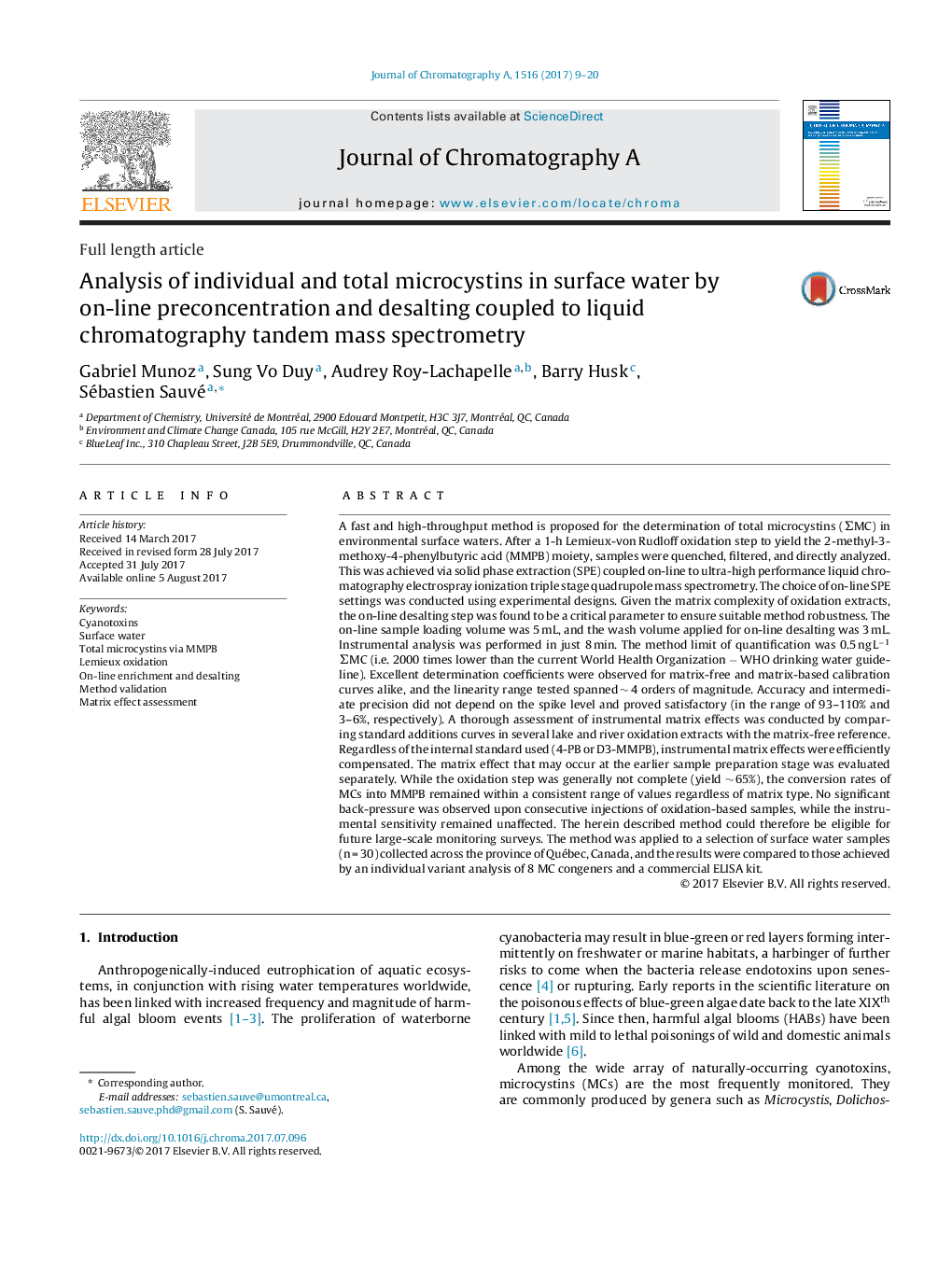| کد مقاله | کد نشریه | سال انتشار | مقاله انگلیسی | نسخه تمام متن |
|---|---|---|---|---|
| 5134871 | 1493410 | 2017 | 12 صفحه PDF | دانلود رایگان |

- Individual and total microcystins were screened in surface water samples from Québec, Canada.
- Lemieux oxidation-based samples were analyzed by on-line SPE - UHPLC-MS/MS in just 8Â min.
- In view of the matrix complexity, the on-line desalting was a key step to ensure analytical method robustness.
- Quantification performances were examined for various surface water matrixes.
- Matrix effects were efficiently compensated using 4-PB or D3-MMPB standardization.
A fast and high-throughput method is proposed for the determination of total microcystins (ΣMC) in environmental surface waters. After a 1-h Lemieux-von Rudloff oxidation step to yield the 2-methyl-3-methoxy-4-phenylbutyric acid (MMPB) moiety, samples were quenched, filtered, and directly analyzed. This was achieved via solid phase extraction (SPE) coupled on-line to ultra-high performance liquid chromatography electrospray ionization triple stage quadrupole mass spectrometry. The choice of on-line SPE settings was conducted using experimental designs. Given the matrix complexity of oxidation extracts, the on-line desalting step was found to be a critical parameter to ensure suitable method robustness. The on-line sample loading volume was 5 mL, and the wash volume applied for on-line desalting was 3 mL. Instrumental analysis was performed in just 8 min. The method limit of quantification was 0.5 ng Lâ1 ΣMC (i.e. 2000 times lower than the current World Health Organization â WHO drinking water guideline). Excellent determination coefficients were observed for matrix-free and matrix-based calibration curves alike, and the linearity range tested spanned â¼Â 4 orders of magnitude. Accuracy and intermediate precision did not depend on the spike level and proved satisfactory (in the range of 93-110% and 3-6%, respectively). A thorough assessment of instrumental matrix effects was conducted by comparing standard additions curves in several lake and river oxidation extracts with the matrix-free reference. Regardless of the internal standard used (4-PB or D3-MMPB), instrumental matrix effects were efficiently compensated. The matrix effect that may occur at the earlier sample preparation stage was evaluated separately. While the oxidation step was generally not complete (yield â¼Â 65%), the conversion rates of MCs into MMPB remained within a consistent range of values regardless of matrix type. No significant back-pressure was observed upon consecutive injections of oxidation-based samples, while the instrumental sensitivity remained unaffected. The herein described method could therefore be eligible for future large-scale monitoring surveys. The method was applied to a selection of surface water samples (n = 30) collected across the province of Québec, Canada, and the results were compared to those achieved by an individual variant analysis of 8 MC congeners and a commercial ELISA kit.
Journal: Journal of Chromatography A - Volume 1516, 22 September 2017, Pages 9-20